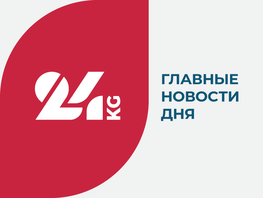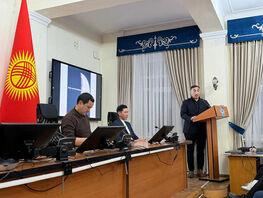The Kyrgyz som, like the Kazakhstani tenge, turns 30 years old this year. During these years, the financial sector of the two countries went through similar periods of formation and development.
The central banks of Kazakhstan and Kyrgyzstan are working on the creation of digital national currencies.
Chairman of the National Bank of Kazakhstan Galymzhan Pirmatov told about cooperation between the Republic of Kazakhstan and the Kyrgyz Republic in the financial sector, future development of the digital currency and features of the floating exchange rate regime in an exclusive interview with 24.kg news agency.
— How do the two central banks interact? What topics are currently on the agenda?
— Kazakhstan and Kyrgyzstan cooperate in the financial sector within the framework of regional associations — these are the Eurasian Economic Union, the Commonwealth of Independent States, the Shanghai Cooperation Organization. The interaction is going on, including the development of open banking and open API, digital currencies of central banks, and development of national payment systems.
A Memorandum of Understanding was signed with the National Bank of Kyrgyzstan in 2022.
The main goals of the document are to share experience and promote development on issues of digital currencies of central banks.
— All EAEU countries announced creation of their own digital currencies. The digital tenge may be put into circulation as early as in autumn 2023. Tell us, please, how it is created?
— The National Bank of Kazakhstan has been implementing the project on introduction of the national digital currency since 2021. In December last year, the bank published the final results of the study with a recommended decision on the need to introduce the digital tenge. The next stages of the project are also indicated there.
It was decided to gradually introduce the digital tenge until 2025.
Galymzhan Pirmatov
During the first phase, by the end of 2023, we plan to organize a pilot project with the participation of second-tier banks on expanded scenarios for making payments and money transfers. Since the introduction of digital currency is a large-scale issue, it is important to take into account all the subtleties and aspects of digital currencies, regulatory and operational issues.
— What aspects of Kazakhstan’s experience should Kyrgyzstan take into account when creating a digital som?
— Integration of digital currencies is innovative, and approaches to their implementation in each country are unique. They depend on the individual characteristics of the market and the national economy.
The National Bank of Kazakhstan is ready for interaction, exchange of experience and proposals with the National Bank of the Kyrgyz Republic on the issues of introduction of the digital currency of the central bank.
— Immediately after gaining independence Kyrgyzstan switched to a floating exchange rate regime, Kazakhstan did this a little later. In your opinion, what are the pros and cons and how much does it help the development of the economy?
— Yes, indeed, in 2015 Kazakhstan switched to a free floating exchange rate regime. Then the National Bank announced transition to an inflation targeting regime, and one of its key elements was the transition to a freely floating exchange rate regime.
The value of the national currency of the Republic of Kazakhstan is currently determined in the market under the influence of supply and demand.
In general, in the conditions of Kazakhstan’s openness and integration into world trade, this has become an important condition for sustainable economic development.
— Does it mean that a floating exchange rate allows the economy to respond more flexibly to external shocks, such as fluctuations in world commodity markets or geopolitical factors?
— Quite right. A faster adjustment of the real exchange rate to changing internal and external conditions allows the economy to better absorb shocks. In turn, economic agents quickly adapt to changes in the external and internal environment.
It should be noted that such operations of the central bank as foreign exchange interventions make it possible to balance the demand and supply of foreign currency during short-term market volatility.
— Tell us about the prospects for cooperation between Kazakhstan and Kyrgyzstan.
— Within the framework of the concluded memorandum, specialists of the monetary regulators of the two countries are successfully discussing, exchanging views and proposals to promote the development of digital currency projects. In addition, the central banks of Kazakhstan and Kyrgyzstan constantly interact within the framework of supervision in the field of payment systems and exchange regulatory information. We plan to continue fruitful cooperation and interaction between our central banks.





